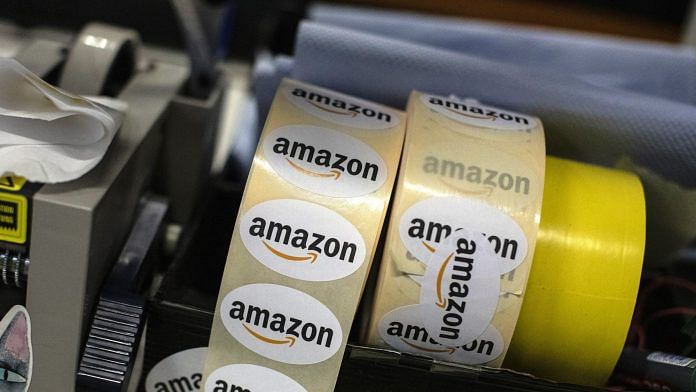Amazon.com Inc. acknowledged that a hiring and warehouse-building binge during the pandemic is catching up with the company as e-commerce sales growth inevitably slows from the torrid pace of the outbreak.
That reality will weigh on revenue and profit going forward as consumers return to their pre-pandemic habits and inflation may cool their spending. Fuel and labor costs are already biting, and executives said Amazon was watching for whether shoppers will trim their purchases to offset rising prices.
Amazon said it lost money during the first quarter and gave a forecast that said it may see another loss in the current period. Sales will be as much as $121 billion in the three months ending in June, missing analysts’ average estimate of $125 billion. It’s an unwelcome development for Chief Executive Officer Andy Jassy, who has inhabited the top job for less than a year and signaled that it would take time for the company to get a handle on economic pressures and an overbuilt logistics network that is hampering Amazon’s productivity.
“Losing money in North America just seems like something investors thought we were beyond,” said Brian Yarbrough, an analyst at Edward Jones. “Amazon needs to prove to investors that as they slow down spending, they can improve profits. Today’s numbers were pretty disappointing.”
The dour results and forecast Thursday sent shares down about 10% in extended trading, after closing at $2,891.93 in New York. The stock has dropped 13% this year amid a broad decline in the S&P 500.
Before the earnings report, Wall Street analysts had been almost unanimous in their optimism about Amazon’s prospects, citing the massive investments in package handling and delivery facilities and continued growth in the highly profitable cloud-computing and advertising businesses.
But Chief Financial Officer Brian Olsavsky said the company’s rapid expansion left it with too much warehouse capacity and too many workers, which will take a while to work through.
Amazon, America’s second-largest private employer, hired roughly 780,000 people over the past two years, bringing its workforce to 1.62 million. It also raised wages, paid out bonuses for new hires and was willing to send out half-empty vans to ensure customers got their packages on time.
The costs piled up, with Amazon reporting $112.7 billion in total operating expenses, including $20.3 billion in fulfillment outlays during the quarter ended March 31. In an attempt to blunt the impact of inflationary pressure, the company on Thursday began levying a first-ever 5% fee on independent sellers who use its shipping services. Prime members in the U.S. will spend $20 more a year for speedy shipping and other benefits such as the company’s streaming service.
Amazon was overstaffed for much of the first quarter, Olsavsky said, which in the company’s warehouses means workers sitting idle or managers asking for volunteers to go home without pay. He resisted the idea that consumers are pulling back from online shopping. Demand “remains strong,” he said in a briefing with reporters. “Customer-facing metrics all look good.”
Sales in the quarter gained 7.3% to $116.4 billion — the slowest pace of growth since 2001 and the first time Amazon has ever recorded back-to-back quarters of less than 10% revenue growth. Unit sales, a measure that excludes cloud-computing contracts and groceries at Amazon-owned Whole Foods Market, were flat compared with the prior year, also a first for Amazon.
Despite the slowdown in the company’s core e-commerce business, analysts remain bullish about Amazon Web Services, the cloud services division that generates most of the company’s profit. AWS reported a 37% increase in revenue to $18.4 billion. The company’s tally of commitments that customers have made to future AWS purchases surged 68% from the prior year, to $88.9 billion.
The company reported a net loss of $3.8 billion, or $7.56 a share, compared with profit of $8.1 billion, or $15.79 a share, in the period a year ago. Amazon said it included a loss of $7.6 billion in non-operating expense from its investment in electric carmaker Rivian Automotive Inc. It was the company’s first net loss in seven years.
Amazon said operating income in the current quarter will range from a loss of $1 billion to a profit of $3 billion. Analysts, on average, projected a profit of $6.8 billion, according to data compiled by Bloomberg.- Bloomberg
Also read: Amazon takes on Ambani again in India. This time, over cricket



